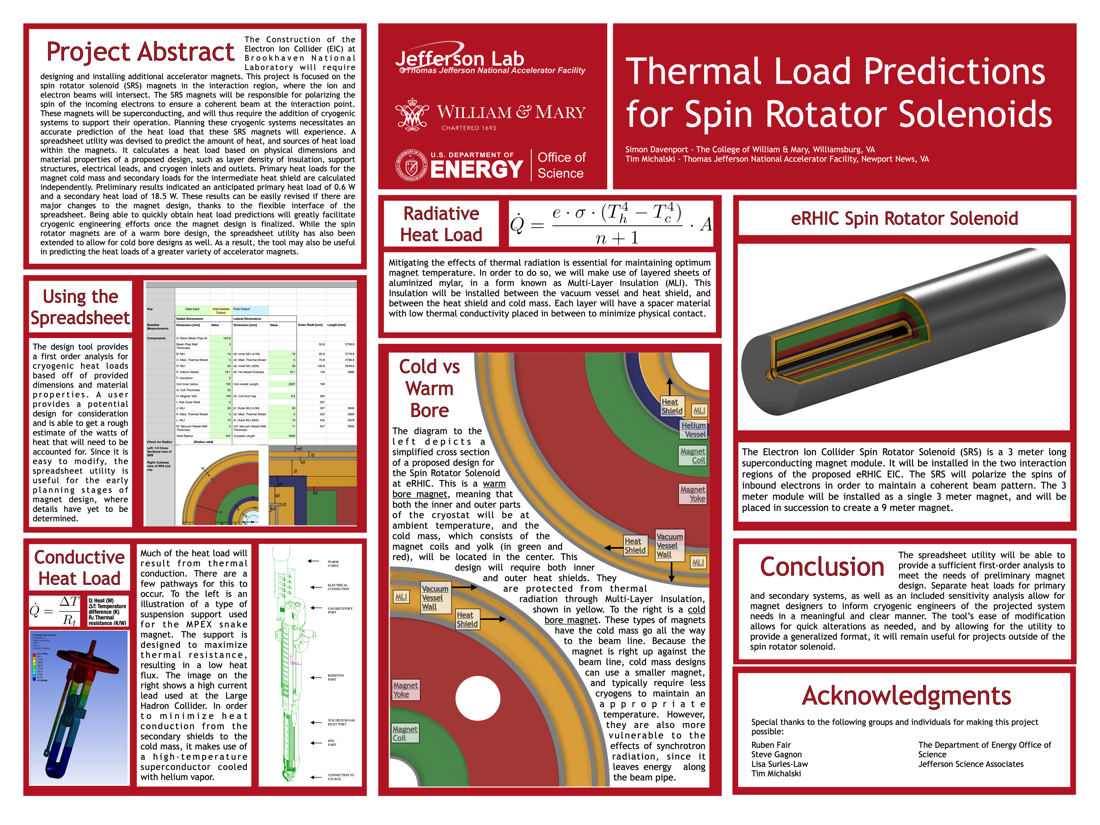Undergraduate Research at Jefferson Lab
Thermal Load Predictions for Accelerator Magnets
Student: Simon Davenport
School: College of William & Mary
Mentored By: Tim Michalski
The Construction of the Electron Ion Collider (EIC) at Brookhaven National Laboratory will require designing and installing additional accelerator magnets. This project is focused on the spin rotator solenoid (SRS) magnets in the interaction region, where the ion and electron beams will intersect. The SRS magnets will be responsible for polarizing the spin of the incoming electrons to ensure a coherent beam at the interaction point. These magnets will be super- conducting, and will thus require the addition of cryogenic systems to support their operation. Planning these cryogenic systems necessitates an accurate prediction of the heat load that these SRS magnets will experience. A spreadsheet utility was devised to predict the amount of heat, and sources of heat load within the magnets. It calculates a heat load based on physical dimensions and material properties of a proposed design, such as layer density of insulation, support structures, electrical leads, and cryogen inlets and outlets. Primary heat loads for the magnet cold mass and secondary loads for the intermediate heat shield are calculated independently. Preliminary results indicated an anticipated primary heat load of 0.6 W and a secondary heat load of 18.5 W. These results can be easily revised if there are major changes to the magnet design, thanks to the flexible interface of the spreadsheet. Being able to quickly obtain heat load predictions will greatly facilitate cryogenic engineering efforts once the magnet design is finalized. While the spin rotator magnets are of a warm bore design, the spreadsheet utility has also been extended to allow for cold bore designs as well. As a result, the tool may also be useful in predicting the heat loads of a greater variety of accelerator magnets.
[Watch the presentation on YouTube]

Citation and linking information
For questions about this page, please contact Education Web Administrator.
